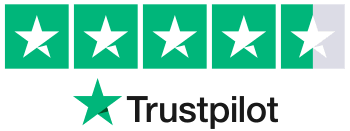
Student-Friendly Graphic Design: Tips for Creating Eye-Catching School Projects
In the realm of school projects, graphic design is a tool that can significantly enhance your work, making it more engaging and effective. The key is understanding how design can complement your academic content. Start by aligning your design elements with the theme of your project. If you’re working on a history presentation, consider using color schemes and fonts that reflect the era you’re discussing. For a science report, clean lines and data visuals can help convey complex information more clearly. Remember, the primary goal is to support and elevate your academic content, not overshadow it.
Incorporating design into school projects requires a balance. While aesthetic appeal is important, clarity and relevance are paramount. Avoid unnecessary embellishments that might distract from your message. Effective graphic design in an academic context enhances understanding and retention of the material, so focus on elements that aid these objectives.
 Typography: More Than Just Fonts
Typography: More Than Just Fonts
Typography in school projects is about more than choosing pretty fonts – it’s about readability and tone. For example, a formal serif font might be appropriate for a literary analysis, while a clean, sans-serif font can suit a scientific report. The key is readability; your text should be easily legible at a glance. Also, be mindful of the hierarchy. Use different font sizes and weights to distinguish between headings, subheadings, and body text, guiding your audience through the project.
Consistency in your typography is crucial. Using too many fonts can create a disjointed and confusing experience for your audience. Stick to a simple palette of two or three fonts and use them consistently throughout your project. This consistency helps maintain a cohesive and professional look.
Visuals: Enhancing Your Message
In school projects, visuals like images, charts, and infographics are invaluable for illustrating concepts and data. Choose images that are directly relevant to your subject matter and ensure they are high quality. When incorporating graphs or charts, customize them to fit your project’s overall design, using consistent colors and styles. This customization not only makes your project more visually appealing but also reinforces your message.
Remember, the purpose of visuals in a school project is to aid comprehension. An image or chart should clarify a point or provide a visual representation of data, not merely decorate the page. Be selective and purposeful with your visuals to maximize their impact.
The Role of Animation in Presentations
Animation can play a transformative role in school projects, particularly in digital presentations. Tools that offer animation capabilities, such as various online design platforms, allow you to bring static content to life. Animations can be used to emphasize key points, demonstrate processes, or make data more engaging. For instance, animating a graph to show changes over time with animation maker can make the data more understandable and visually compelling.
However, it’s important to use animation judiciously. Overuse can distract from your content. Aim to use animations in a way that enhances understanding and engagement without overwhelming your audience. The goal is to make your project more dynamic and interactive, not to turn it into a spectacle.
 Consistency: Tying It All Together
Consistency: Tying It All Together
Consistency is the glue that holds your design together. In school projects, maintaining a consistent color scheme, font palette, and layout style is essential. This consistency creates a unified look and feel, making your project more professional and cohesive. Whether you’re working on a poster, a digital slideshow, or a written report, ensuring that all design elements are harmoniously aligned will enhance the overall impact of your work.
When every element of your project follows the same design principles, it reinforces your message and makes your work more memorable. Consistency also helps your audience focus on the content, as they’re not distracted by erratic design choices.
Feedback: A Critical Step
Seeking and incorporating feedback is a crucial step in any school project. Present your work to peers, teachers, or family members and ask for their honest opinions. Focus on specific areas like the clarity of your content, the effectiveness of your visuals, and the overall impact of your design. Use this feedback to refine your project, enhancing both its visual appeal and its communicative power.
Remember, feedback is an opportunity for growth. Constructive criticism can provide insights you may have overlooked and help you develop your skills as both a student and a designer.
Case Study: Crafting Your Stellar School Project
Imagine you are working on a high school science project about the solar system. Here’s how you can skillfully apply the graphic design tips we’ve discussed to both a digital presentation and a printed report, turning your educational content into an engaging masterpiece.
For your digital presentation, choose a color scheme inspired by the cosmos – think deep blues and blacks for the background, complemented by whites and yellows for your text and highlights. This palette not only sets the right tone for your topic but also ensures that your text and visuals pop against the dark backdrop. In typography, go for a clean, modern sans-serif font for your body text and a slightly bolder version for headings. This consistency will give your presentation a professional and cohesive look.
Incorporate high-quality images of planets and design custom-made infographics to present key facts like planet sizes, distances from the sun, and orbital periods. Align these elements with your overall color scheme for a unified design. To make your digital presentation even more dynamic, animate key data points in the infographics. An animated bar graph comparing the sizes of the planets, for example, can make complex information more accessible and visually compelling.
For your printed report, maintain the same color scheme and font choices to ensure a cohesive feel across both formats. Design the layout with ample white space around your text and images to avoid clutter. Include charts and graphs from your digital presentation to break up the text and reinforce the information.
Feedback is crucial in refining your project. Present a draft to your peers for their honest opinions. Based on their feedback, you might adjust the animation speed in your presentation for better clarity or add captions to the images in your report for additional context.
This approach to your school project exemplifies how effective graphic design can transform educational content. By thoughtfully applying these design principles, you’re not just presenting information; you’re creating an engaging, professional, and memorable educational experience.
Final Thoughts: The Synergy of Design and Education
Incorporating graphic design into school projects is more than an exercise in aesthetics; it’s about enhancing communication and comprehension. By thoughtfully applying design principles, students can transform their projects into more engaging, effective, and memorable pieces of work. The key lies in using design not as a mere decoration but as a tool to better convey your academic content.
As you embark on your next school project, remember that design is your ally. Use it to clarify, emphasize, and bring life to your ideas. With each project, you’ll not only improve your academic work but also develop a valuable skill set that extends beyond the classroom. Happy designing!





